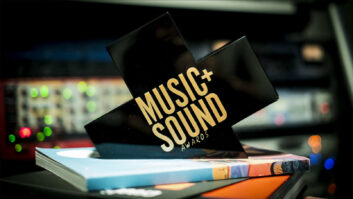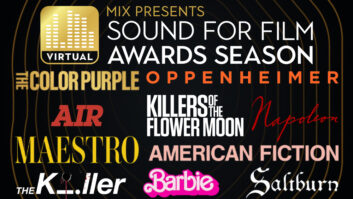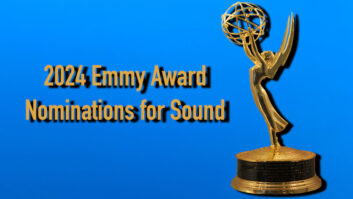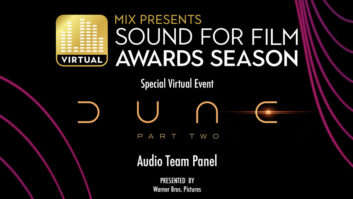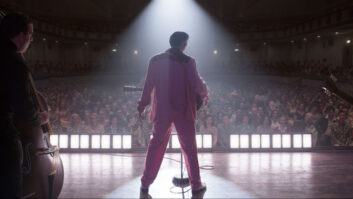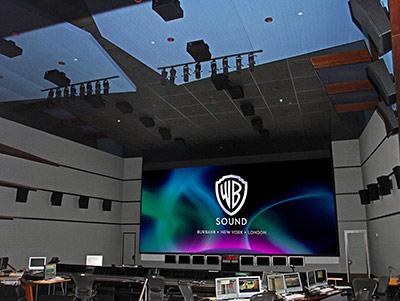
The history of Warner Bros. Sound is essentially the history of film sound, from the much-talked about introduction of talkies with The Jazz Singer in 1927 on through the present-day embracing of Dolby Atmos and Immersive Sound mixing. It’s not that Warners invented or even had a corner on the market on each new technology or process; it’s just that the company seems to always be at the forefront, pushing innovation and adoption in both sound and picture.
It’s no surprise, then, that over the past three years, with the closing of Todd-AO/Soundelux stages in and around Hollywood and general consolidation in the market, WB Sound underwent expansion, first with the purchase of De Lane Lea in London in November 2012, and most recently with the acquisition of Digital Cinema in New York City in May 2015. To borrow an overused cliché, while the rest of the industry was largely in a wait-and-see mode, feeling out 3D projection and the coming Immersive Sound formats, WB Sound doubled down.
The foundation for the recent expansion was laid back in the mid-2000s with a reinvention of workflow, diversification, innovation and flexibility under the guidance of Senior Vice President Worldwide Post-Production Services, Kim Waugh. There was a new emphasis on networked facilities and interconnectivity between editing and mixing. DAW stations were built into the stages for seamless integration between Pro Tools and the custom Neve DFC consoles. They put in the largest Avid Icon console in Hollywood, along with a host of D-Control surfaces, often in conjunction with the DFCs, allowing for hybrid mixing environments. They built the first stages to run at 96 kHz.
Much of the new workflow was necessitated by a boom in sound for television, where during any one season the facility might have up to 22 shows on a weekly basis. For features, tracks often moved between mid-sized rooms at the premix to the large stages for final mixing. Sound design suites became more sophisticated and incorporated 5.1, 7.1 and immersive monitoring. While the feature stages were assigned to two-person re-recording teams, all rooms had to be flexible; all had to be connected.
Now, that connection has gone worldwide, as tracks and talent are able to move freely between Burbank, NYC and London. It’s just happened with WB Sound Burbank creatives Dane Davis on Devil’s Harvest and Michael Prestwood Smith on Mission Impossible—Rogue Nation.

LONDON
Warner Bros is the only major studio to have a post-production presence in London focused on the re-recording of feature films, and the only studio to make a massive investment with the acquisition of De Lane Lea and its four re-recording stages, two ADR stages and 51 networked picture editing rooms.
Officially, Warner Bros. Studios Leavesden purchased the renowned, near 70-year-old De Lane Lea facilities in Soho in November 2012, and one of the first films through the facility following the purchase was Gravity, for which Glenn Freemantle won the Oscar for Best Sound Editing and Skip Lievsay, Christopher Benstead, Niv Adiri and Chris Munro won for Best Sound Mixing.
Staying true to its promise to continue investment in the facility, in 2014 WB upgraded the Meyer Sound 7.1 monitoring system in Stage 1 to a full Dolby Atmos mix environment, the first of its kind in London. The upgrade is built around three Acheron 80 and three Acheron LF screen channel loudspeakers, one of each paired to receive a separate channel. Atmos surround sound is provided by 12 HMS-10, 10 HMS-12, and 10 HMS-5 surround loudspeakers, while five X-800C high-power cinema subwoofers in front and two X-400C cinema subwoofers in the rear provide low end. The room was booked solid from the day it reopened, most recently mixing Mission Impossible—Rogue Nation and currently the latest Bond film, Spectre.

NEW YORK
Warner Bros. Sound had been operating in New York since soon after its founding in Pennsylvania, obviously, going back to the 1920s. The Jazz Singer, using WB’s Vitaphone sound on disc playback format, premiered there. In one sense, the company is returning to its roots.
Over the past five years or so the company had worked out of makeshift edit suites and rented stages around town. About two years ago, they struck a deal with Sync Sound/Digital Cinema owners Ken Hahn and Bill Marino to occupy the second floor of Digital Cinema, adding eight editorial suites and re-equipping the re-recording stage. In May of this year, Warner Bros. purchased the whole building (Sync Sound remains, busier than ever, in a building across the street) and put Academy Award-winning supervising sound editor/re-recording mixer, and native New Yorker Skip Lievsay (Gravity) at the creative helm along with Paul Urmson (Focus and Ricki And The Flash) and Ben Cheah (The Family Fang and Joyful Noise). In a clear indication of how talent moves around, Lievsay found himself right back in L.A. working on the final installment of The Hunger Games.

The building at 426 West 55th Street, while currently undergoing final cosmetic upgrades, now houses the largest stage in NYC on the first floor, sound and picture editorial on the second floor, and an additional re-recording stage and ADR stage on the third floor. Talent and rooms are available to third parties.
BURBANK
With 20 re-recording stages, six ADR stages, three Foley stages and six screening rooms, the Burbank headquarters is a one-stop-shop for filmmakers and fully equipped to accommodate feature length film, both long and short form television, animation, picture services and a multitude of related creative services.
Warner Bros. Sound in Burbank is the most diversified sound department in the industry with no fewer than 23 specialized sound business units including 2 POP Music (Music Editorial, Supervision and Composition), Audio Circus (Animation Sound for Television), Motion Capture and Scoring to name a few. Additionally, the consolidated post production services group under Waugh now includes Motion Picture Imaging, a highly specialized boutique on the studio lot which has theatrical D.I. Suites, television color finishing, picture restoration and picture mastering services.

The ability to seamlessly package picture and sound services with the highest level of creativity and servicing can be found right there on the Warner Bros. Lot. It’s not entirely unique, as other lots offer similar services. But Warner Bros. has certainly pioneered the true integration of services in a way others can emulate—if they decide to go worldwide. And if they do, Warner Bros. is still one step ahead.
